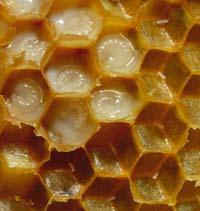Case of missing bees

In the US it has become a national problem. And it is that bees have great economic importance, and not for honey, which is scarcely exploited, since they bring it from China and Argentina at a much lower price, but for their work as pollinators.
American beekeepers carry their beehives in trucks, from field to field, to rent to the peasants the services of bees. In fact, for many plants the work of bees is almost indispensable, and for many other crops improve notably thanks to their services. Thus, only for the pollination of California almonds, 1.3 million colonies are rented per year, approximately half of the US bee colonies.
Bees have calculated a profit of 15,000 million dollars. It is no wonder, therefore, that concerned about the disappearance of bees, beekeepers and farmers have brought the issue to Congress requesting that they investigate the problem. And the congress, after analyzing the issue, launched in June an action plan to carry out investigations and take preventive measures.
Leaving no trace
Having losses in hives is not something new. In the last two decades, the parasitic mites have caused great losses, especially the baroque -- which also seriously damages the Basque Country. And the loss of bees in winter is usual: In the US, the loss of 20% in winter is considered normal. In the last winter the losses were 30 to 90%. And while in many cases typical symptoms of parasite mites were detected, 50% of the colonies disappeared without leaving a trace.
The adult bees are the ones that disappear and when beating only the queen, the eggs, the larvae and the pupas, sometimes with a few adults. Those who remain in the hive are usually healthy, with few parasites. In addition, there are food reserves without stealing, although there are active colonies around. This suggests that the other bees avoid the damaged colony, since it is common for the bees to loot when they find a weak colony. This mysterious disappearance is known to Americans as Colony Collapse Disorder.

Bees are also disappearing in Europe. In Spain, for example, where a quarter of the European bee colonies are located, it has been lost between 30% and 35% of the colonies in recent years. Some relate the European with what is happening in the US. Thus, American and European researchers work to understand what makes bees disappear.
Many suspects
The U.S. government has launched a plan that includes different hypotheses such as parasites and pathogens, stress, poor food and pesticides. But they suspect that immunosuppressive stress caused by various factors may be the cause of the disappearance of bees. Other hypotheses have been explained as mobile phone antennas, transgenic plants, climate change, etc.
Pesticides are considered very suspicious by many experts. For example, Galician beekeepers, after ten years of loss and research, have denounced that the pesticides are responsible. They have investigated that nicotine derived pesticides affect the nervous system of bees and, in addition to weakening the immune system, subtraction them. These pesticides were also denounced by French beekeepers, so their use is prohibited, even if only in the fields of corn and sunflower.
The research team led by Mariano Higes of the Centro Apícola de Marchamalo in Guadalajara is convinced that: The culprit is the fungus Nosema ceranae. For seven years they have investigated the disappearance of bees. The researchers initially attributed the blame to the pesticides, but saw that the remains of pesticides appeared in a few colonies and that the bees disappeared very far from the cultivated lands. The new pathogen Nosema ceranae was subsequently discovered: Parasite fungus of Asian bees. This fungus affects adult bees, that is, those who work outside. It enters through the mouth (spores) and affects the digestive system. The affected bee, unable to feed, dies weakened. According to Higes, a self-defense mechanism prevents bees from returning to the hive, so the queen and young people are not harmed.

Higes says that 50% of the Spanish colonies could be affected by this phenomenon. It extends mainly to the south of Madrid, but also on the edge of the Gulf of Bizkaia have found very high rates. If the colonies affected by the fungi are not treated, according to Higes, they can disappear between 6 and 18 months. The researchers have treated several hives with antibiotic fumagiline and are getting good results.
N. ceranae is found in samples from all over Europe. The same fungus has also appeared in the US, but its researchers do not believe that is the cause of the disappearance of bees, or not just that. Surely the debate will be long.
Buletina
Bidali zure helbide elektronikoa eta jaso asteroko buletina zure sarrera-ontzian











